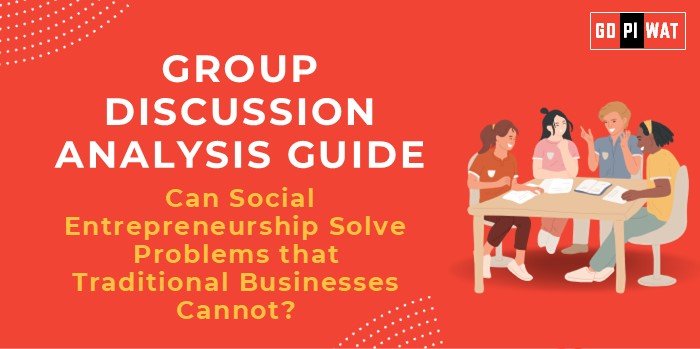📋 Can Social Entrepreneurship Solve Problems that Traditional Businesses Cannot?
🌐 Introduction to the Topic
Context Setting: Social entrepreneurship represents a rising model that blends business acumen with social impact. With its focus on solving systemic problems, it complements or even surpasses traditional business models in addressing certain issues like poverty, healthcare access, and education inequities.
Topic Background: The concept of social entrepreneurship gained traction in the 21st century with pioneers like Muhammad Yunus (Grameen Bank). Its mission often revolves around addressing gaps that profit-driven businesses overlook due to perceived low returns or high risks.
📊 Quick Facts and Key Statistics
- 💰 Global Social Enterprise Market: Estimated at $393 billion in 2023, highlighting its economic significance.
- 🌍 Grameen Bank’s Impact: Over 9 million borrowers lifted out of poverty through microcredit schemes.
- 👩🌾 India’s SEWA Initiative: Empowered 2.1 million women in rural India through cooperative models.
- 📈 Youth Interest: 70% of young entrepreneurs globally prefer ventures with social impact focus (Global Entrepreneurship Monitor, 2023).
👥 Stakeholders and Their Roles
- 🌟 Social Entrepreneurs: Innovate and implement sustainable solutions for pressing issues.
- 🏛️ Governments: Provide policy support and funding mechanisms.
- 💼 Traditional Businesses: Partner to integrate Corporate Social Responsibility (CSR) strategies.
- 🌐 NGOs and International Organizations: Offer grassroots connections and implementation frameworks.
- 👨👩👧👦 Citizens: Participate as beneficiaries and agents of change.
🏆 Achievements and Challenges
Achievements
- 🏥 Healthcare Access: Social enterprises like Aravind Eye Care deliver affordable eye surgeries globally.
- 📚 Education Gaps: Enterprises like Byju’s democratize quality education.
- 💸 Economic Empowerment: Microfinance institutions uplift millions from poverty.
- 🌱 Environmental Sustainability: Social businesses like Terracycle promote circular economies.
Challenges
- 🚧 Scaling Operations: Retaining local focus while expanding reach.
- 💰 Limited Funding: Compared to traditional businesses.
- ⚖️ Balancing Profit and Impact: Navigating dual objectives.
- 🗂️ Regulatory Hurdles: Especially in emerging markets.
Global Comparisons:
- 🇧🇩 Bangladesh: Grameen Bank’s microfinance success.
- 🇰🇪 Kenya: M-Pesa revolutionizing mobile banking for financial inclusion.
Case Studies:
- SELCO (India): Solar solutions for off-grid rural households.
- TOMS Shoes: “One for One” model impacting global communities.
📝 Structured Arguments for Discussion
- 🌟 Supporting Stance: “Social entrepreneurship addresses societal needs traditional businesses ignore, leveraging innovation to solve deep-rooted issues.”
- ❓ Opposing Stance: “Social enterprises often lack the scale, resources, and influence to tackle global problems effectively compared to large corporations.”
- ⚖️ Balanced Perspective: “While social entrepreneurship excels in targeted interventions, partnerships with traditional businesses amplify its reach.”
🔍 Effective Discussion Approaches
- 📖 Story-Based: “Consider the Grameen Bank—a beacon of hope for millions in poverty.”
- 📊 Statistical: “Social enterprises contribute over $390 billion annually, tackling issues traditional businesses overlook.”
- ❓ Question-Based: “Can profit-driven businesses genuinely address poverty and environmental sustainability?”
Counter-Argument Handling:
- Highlight mutual synergies.
- Address scale limitations with collaborative examples.
- Support rebuttals with impactful success stories.
📊 Strategic Analysis of Strengths and Weaknesses
- ✔️ Strengths: Mission-driven focus, innovative approaches, grassroots impact.
- ❌ Weaknesses: Limited scalability, funding constraints, regulatory issues.
- 💡 Opportunities: Collaboration with corporates, tech integration, rising social consciousness.
- ⚠️ Threats: Competition from CSR programs, reliance on donor funding, economic downturns.
🏫 Connecting with B-School Applications
- 🌟 Real-World Applications: Research on sustainability in finance (e.g., ESG funds), case studies on models like Grameen or Aravind Eye Care.
- 📋 Sample Interview Questions:
- “What role can technology play in scaling social enterprises?”
- “Discuss how social entrepreneurship aligns with sustainable development goals.”
- 💡 Insights for Students: Develop leadership qualities focusing on stakeholder collaboration; understand scalability challenges and integrate financial literacy into social impact initiatives.


